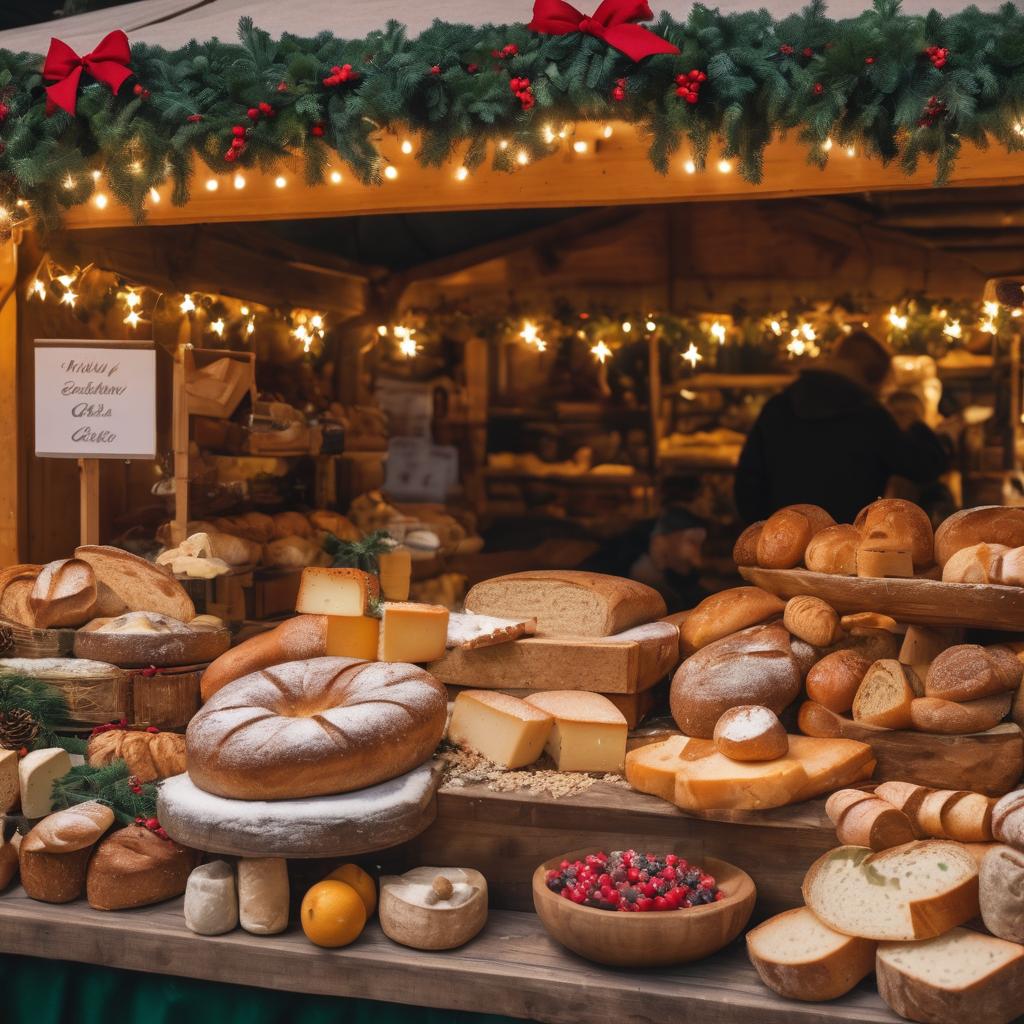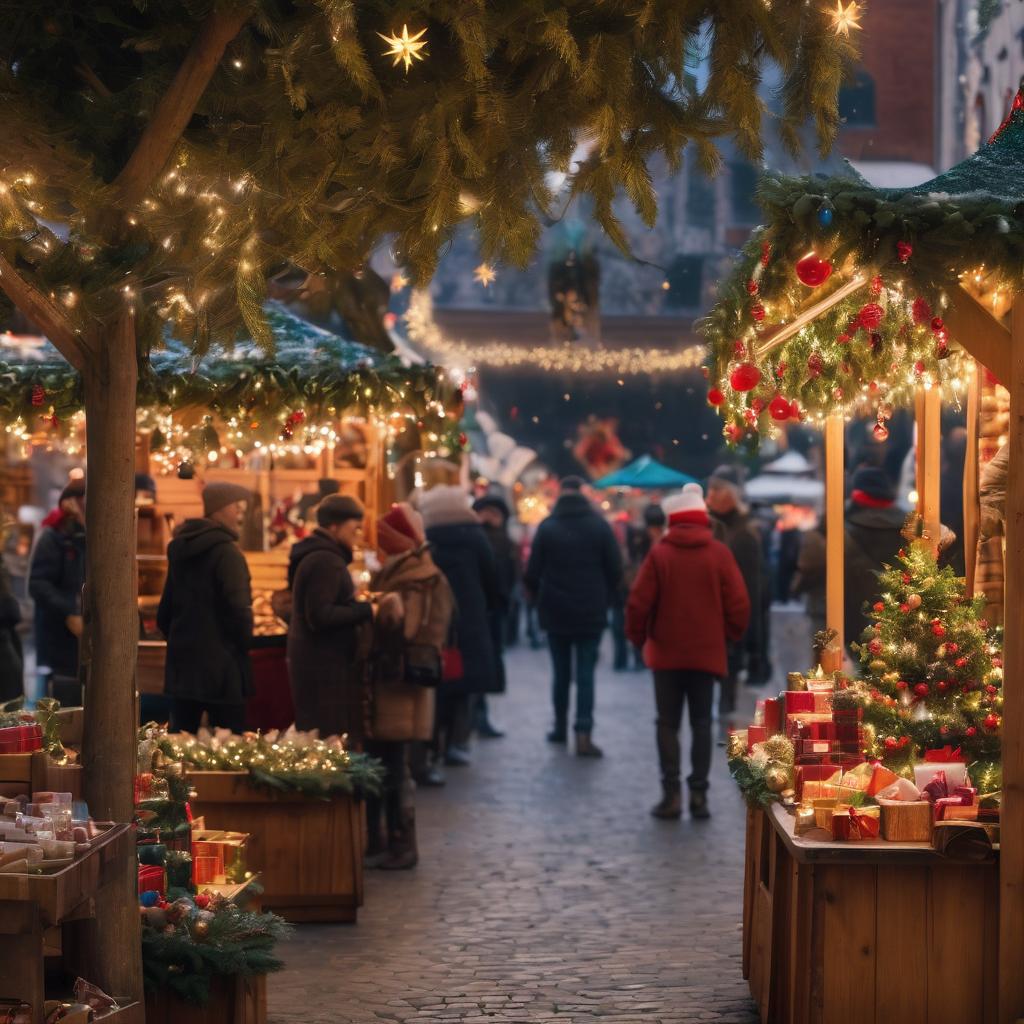
The History of Christkindlmarkets
Published on December 14, 2023
Since 1996, the Christkindlmarket has become one of Chicago’s most beloved holiday traditions, putting an Old-World spirit in the heart of a modern American city. The history of outdoor winter markets goes all the way back to the Middle Ages, but, as much as they embody the Christmas spirit, their popularity today wouldn’t be possible without the influence of the 20th century’s most infamous villains. Read below to find out why.
By Dave Lifton (@daveeatschicago)
The Christkindlmarket, as we know it today, can trace its origins back to the end of the 13th century, when an open-air Krippenmarkt(“manger market”) was held in Vienna during the four-week Advent period. The practice soon spread to present-day Germany, with Munich holding its first Nikolaimarkt on the Marienplatz in 1310. Another early market took place around 1384 in the small town of Bautzen in Saxony, when King Wenceslaus IV of Bohemia allowed butchers to sell meat. Frankfurt held its first winter street market in 1393.
However, it’s widely believed that these and others that followed were secular, and the timing was mainly so that residents could gather provisions for the brutal Central European winters. Dresden’s Streizelmarkt (1434) is often seen as a key factor in the evolution of the Christkindlmarket because of the selling of streitzel, also known as stollen, a German version of fruitcake.

In 1545, 15 years after the opening of the first Christmas market in his hometown of Nuremburg, Protestant reformer Martin Luther changed the date on which he gave his children presents from Dec. 6 (St. Nicholas Day) to Christmas. The intention was to break from the Catholic tradition of honoring saints towards a greater emphasis on the teachings of Jesus. The presents, he told them, came from the Christkind—the Christ child—and the Lutherans followed suit.
The markets that, by now, had sprung up throughout Germany expanded to include gifts, such as toys, pottery, and Nativity scenes, eventually taking on the name Christkindlmarket, possibly in 1628. But this shift towards consumerism had an ironic consequence. Many German churches had wanted the markets nearby in order to encourage people to attend Christmas services, but they now found themselves competing for their parishioners’ attention. The conflict between the religious significance of Christmas and the commercialization of the holiday continues to this day.
Over the next 200 or so years, the growth of the working class though industrialization meant that the German populace had more money to spend at Christmastime, and the Christkindlmarkets grew. From 1805 to 1840, for example, the number of stalls in Berlin’s market nearly doubled, from 305 to 600.
But the increase of the unwashed masses eventually alienated the upper classes, who now chose to do their holiday shopping in the emerging department store. Attendance at the Christkindlmarkets declined, and many were relocated from bustling city squares to the outskirts.

The markets found an unfortunate ally in the Nazi Party. As part of their propaganda campaign to promote Aryan superiority, Christkindlmarkets started returning to the downtowns in 1933 to compete with the department stores, many of which were owned by Jews. The Nazis set regulations for the design of the markets, and, to boost the economy, stipulated that only German-made goods related to the holiday could be sold. The move had the desired effect, with 2 million people shopping at the market in 1936.
World War II caused the markets to close, but they reopened after the war and have since become integral to the Christmas experience in Germany. As of 2019, there are roughly 3,000 Christmas markets in Germany, and Christkindlmarkets have been exported to other cities around the world, including Chicago.
Originally conceived by the German American Chamber of Commerce of the Midwest as a way to promote trade between the U.S. and Germany, the Christkindlmarket Chicago debuted in 1996 in Pioneer Court. A year later, it was moved to Daley Plaza, which has been its home ever since. In recent years, it has expanded to Wrigley Field as part of the Winterland at Gallagher Way and Aurora.
The market has vendors from all corners of the globe, but its focus remains Germanic, with the smell of grilled bratwursts and sugared nuts permeating the air, as visitors sip glühwein, hot chocolate or apple cider out of collectible souvenir mugs while they shop. In 2022, Big 7 Travel ranked Chicago’s Christkindlmarket as the third best in the world, behind only Brussels and Berlin.

The Adventure starts when you say it does.
All eATLAS Adventures are designed and built by experienced eATLAS Whoa!Guides. They're always on. Always entertaining. And always ready to go.
Check out our Adventures!